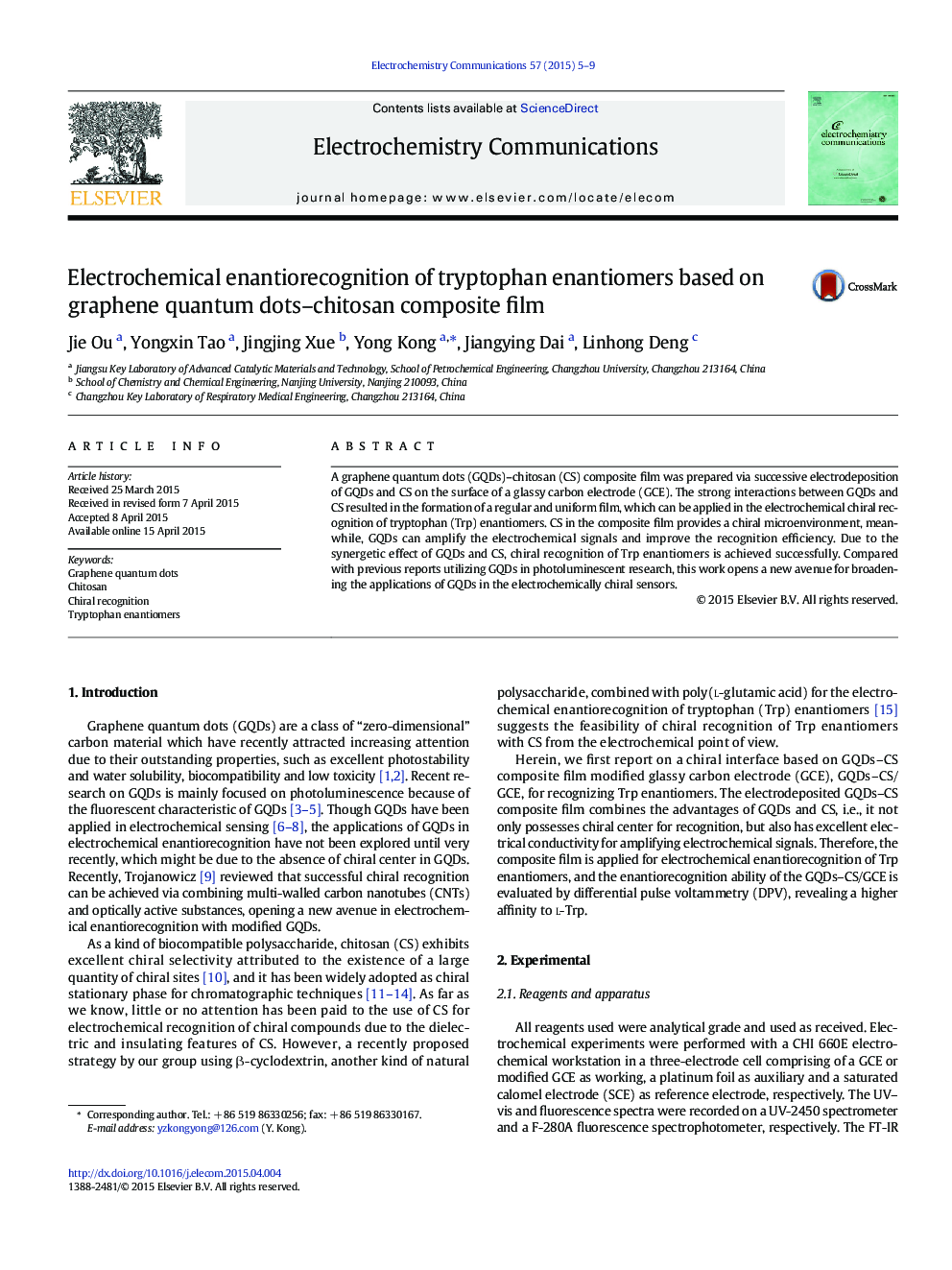| Article ID | Journal | Published Year | Pages | File Type |
|---|---|---|---|---|
| 178831 | Electrochemistry Communications | 2015 | 5 Pages |
•GQDs–CS composite film was prepared via successive electrodeposition of GQDs and CS.•CS in the composite film provides a chiral microenvironment.•GQDs can amplify the electrochemical signals and improve the recognition efficiency.•Due to the synergetic effect of GQDs and CS, recognition of l- and d-Trp is achieved.•It opens a new avenue for broadening the applications of GQDs in chiral sensors.
A graphene quantum dots (GQDs)–chitosan (CS) composite film was prepared via successive electrodeposition of GQDs and CS on the surface of a glassy carbon electrode (GCE). The strong interactions between GQDs and CS resulted in the formation of a regular and uniform film, which can be applied in the electrochemical chiral recognition of tryptophan (Trp) enantiomers. CS in the composite film provides a chiral microenvironment, meanwhile, GQDs can amplify the electrochemical signals and improve the recognition efficiency. Due to the synergetic effect of GQDs and CS, chiral recognition of Trp enantiomers is achieved successfully. Compared with previous reports utilizing GQDs in photoluminescent research, this work opens a new avenue for broadening the applications of GQDs in the electrochemically chiral sensors.
Graphical abstractChitosan provides a chiral microenvironment, meanwhile, graphene quantum dots can amplify the electrochemical signals. Due to the synergetic effect of chitosan and graphene quantum dots, chiral recognition of tryptophan enantiomers is achieved successfully.Figure optionsDownload full-size imageDownload as PowerPoint slide
